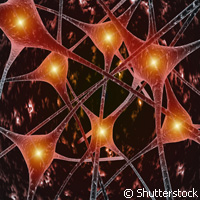Skin cells converted into brain cells, EU-funded team takes steps towards the future
A new EU-funded study has proved that skin cells can be converted into brain cells by using a new technique that carries out the process without first passing though the stem cell stage. The study, which was funded in part by the European consortium for stem cell therapy for neurodegenerative diseases ('NEuroStemCell') under the 'Health' Theme of the Seventh Framework Programme (FP7), sets out a surprisingly simple method developed by researchers from Lund University in Sweden. Writing in the journal PNAS, the team explains how the technique involves the activation of three genes in the skin cells that are already known to be active in the formation of brain cells at the foetal stage. By using such a technique, the team were able to avoid many of the ethical problems that have long plagued stem cell research. Research into stem cells, cells that can be artificially manipulated to become a variety of different cell types for use in regenerative medicine, remain controversial due to the involvement of embryonic cells and the uncertainty surrounding potential continued division of stem cells leading to tumour formation. However, this new research successfully created specific types of nerve cells from human skin by reprogramming connective tissue cells (fibroblasts) directly into nerve cells. By changing the process and starting with the mature cells instead of the stem cells, the scientists were able to bypass the ethical issues linked to research on embryonic stem cells. 'We didn't really believe this would work, to begin with it was mostly just an interesting experiment to try. However, we soon saw that the cells were surprisingly receptive to instructions,' comments lead researcher Malin Parmar. The study also sets out how skin cells can be directed to become certain types of nerve cells. They conducted experiments where a further two genes were activated, and the results yielded dopamine brain cells - the type of cell that dies in those suffering from Parkinson's disease. These findings therefore have significant implications for the eventual possibility of same-patient nerve cell transplants. In addition, the cells could also be used as disease models in research on various neurodegenerative diseases. Although it has yet to be proven, scientists predict that a same-patient nerve cell transplant using specifically designed cells originating from the same patient would be accepted better by the body's immune system than cells transplanted from 'alien' tissue. Unlike older previously established reprogramming methods, where skin cells are turned into pluripotent stem cells, known as IPS cells, direct reprogramming means that the skin cells do not pass through the stem cell stage when they are converted into nerve cells. The team explain that to build on their discovery more research needs to carried out into how the new nerve cells survive and function in the brain before the technique can be used in clinical practice. The eventual aim is to be able to produce the vital brain cells that a patient needs simply from a skin or hair sample. 'This is the big idea in the long run. We hope to be able to do a biopsy on a patient, make dopamine cells, for example, and then transplant them as a treatment for Parkinson's disease,' says Malin Parmar. The NEuroStemCell consortium is a collaboration between leading European experimental and clinical researchers who share the same goal: maximising prospects for successful clinical trials of stem cell therapy for Parkinson's and Huntington's Disease. The goal is to compare different stem cell sources with respect to their capacity to generate mesencephalic Dopaminergic and striatal GABAergic neurons suitable for neuronal cell replacement.For more information, please visit: Lund University: http://www.lunduniversity.lu.se/
Countries
Sweden



